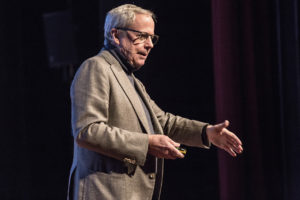 You will experience an unnecessary level of mental fatigue and numbness in your environments and organizational systems by simply mixing up things that represent different agreements with yourself.
You will experience an unnecessary level of mental fatigue and numbness in your environments and organizational systems by simply mixing up things that represent different agreements with yourself.
The most obvious case is where there are stacks of things that include items that have actions associated with them and things that just need to be filed or tossed. Often this is true of piles of reading material—magazines, junk mail, email printouts, copies of articles, etc. Most people do not make a clean distinction, visibly or psychologically, between what they still tell themselves they should read, and what should be stored, routed, or just thrown away.
Similarly, thick project folders, tabletops and databases have often lost their value as operational tools in people’s lives. The majority of what’s inside project and client folders is reference and support material. But they also often include things that potentially have Next Actions and Waiting Fors associated with them, untracked in other control systems.
When your systems do not obviously distinguish between various actions required or desired with the contents, your brain will still feel obligated to make that sort every time it sees it. That’s way too much trouble, especially when we’re in the heat of daily battle, so the brain has to shut down rather than doing the detailed re-thinking required. Numbness ensues. Unfortunately, we don’t seem to go selectively numb—it tends to cut off the source of inspiration and enthusiasm as well.
With a proper segmentation of the nature of our “stuff”, it is amazing to notice the immediate change for the better in clarity and energy. This is the beauty of the GTD Workflow Diagram in helping you walk through that distinction. With a little effective categorizing, you can stop having to keep thinking about having to be doing so much work!
[Note: This essay appeared in David Allen’s Productive Living Newsletter. Subscribe for free here.]
